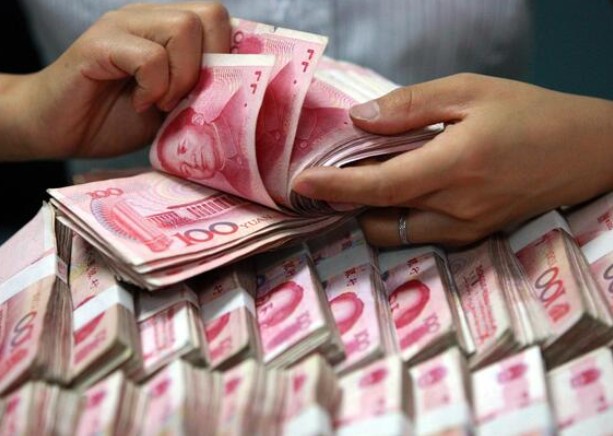China’s B&R: Effective Mechanism to Promote Yuan and Unlock New Markets

China’s Belt and Road Initiative (BRI) is transforming the global economy. It’s not just about building infrastructure; it’s also enhancing the use of the Chinese yuan and creating new markets across Asia and beyond.
China’s BRI: Promoting the yuan
China is pushing for the yuan’s use in international trade through various agreements and financial tools. By 2025, the country has formed currency swap agreements with more than 30 nations, including Argentina, Egypt, Pakistan, Malaysia, Peru, and Belarus. This strategy allows China to facilitate trade in yuan, reducing reliance on the dollar and enabling countries to conduct business without the influence of US financial power. Russia-China bilateral trade is almost entirely done in Ruble and Yuan.
China’s BRI: Creating new trade routes
The BRI is well-known for its extensive infrastructure projects, such as railways, highways, ports, and energy pipelines, which establish alternative trade routes linking China to Europe, Africa, and the Middle East. The China-Pakistan Economic Corridor connects western China to the Arabian Sea through new highways and ports, providing China with direct access to crucial maritime routes.
China’s BRI: Encouraging economic integration
With investments in infrastructure and the creation of special economic zones, China is fostering regional economic integration among BRI nations. In 2025, Central Asia and Africa emerged as leading destinations for Chinese investments, attracting $25 billion and $30.5 billion, respectively.
China’s BRI: Record engagement levels
The BRI’s total engagement reached a remarkable $124 billion in the first half of 2025, marking the highest level ever for a six-month period. Since it began in 2013, the overall BRI engagement has exceeded $1.3 trillion, involving infrastructure, trade, and investment partnerships with over 150 countries, according to a recent BRI report.
Why is China pouring money into Africa?
Every country’s foreign policy is focused on the best benefits they can derive from relations with other nations. But some have accused China of a debt trap. Beijing has been criticised in the past for lending too much to poor countries without scrutinising their ability to repay, and its vast loans to cash-strapped African states have fuelled concerns about debt traps. China has $153 billion of public sector lending from 2000 to 2019 in Africa and 45% of this are obligations on Sub-Saharan Africa.
China’s ‘Debt-Trap’ Diplomacy with Third-World Nations
But this is not only limited to Africa. I65 countries around the World owe debts of at least $385 billion, 42 of which have a public debt exposure to China in excess of 10% of their GDP. Sri Lanka, for instance, after having failed to meet its debt obligations to China, ceded the port of Hambantota to Beijing. Venezuela delivers oil to China instead of its worthless currency. Ecuador, in the first full year of Xi’s presidency, already was exporting 90% of its oil to China, perhaps even below the world market price. In addition, Ecuador cannot seem to prevent the abuse of its marine life just on the edge of its sovereign maritime economic zone by hundreds of Chinese fishing boats near the Galapagos Islands. Critics also accuse China of favouring BRI contracts with countries that have authoritarian regimes. Beijing has invested in Zimbabwe in Africa, Laos in Southeast Asia, and Venezuela in South America. A new, particularly ominous Western criticism is that China distributes its facial recognition technology to BRI-affiliated countries where Chinese surveillance systems have been installed, in states such as Bolivia, Venezuela and Ecuador. China’s disregard for the human rights of its own citizens not surprisingly extends to the rights of the citizens of its host nations. China’s extraction of raw materials and minerals in Ecuador, for instance, has elicited protests by those supposedly concerned about the environment. While some of China’s infrastructure projects are beneficial but costly — such as the construction of a rail line in Kenya from the capital Nairobi to the main port of Mombasa — others are white elephants. One such marginally useful project is a road built by Chinese engineers from Uganda’s capital Kampala to the country’s international airport at Entebbe. The project is expected to improve traffic but will have little to no other benefits — apart from moving local resources to China.
An additional shortcoming of the massive outlay of Chinese loans that finance infrastructure projects are that host nations are forced to put up with what CCP Chairman Xi calls Chinese characteristics. When Beijing settles on an infrastructure project, large numbers of Chinese workers arrive in the host country, establish their own living area, complete the project and then leave. There is little or no hiring of local workers or training of locals in skills that could exact a benefit from the extended presence of China’s skilled professionals. Some Chinese teams even bring their own chefs and rarely engage in social activities with the citizens of the host nation. The objectives of China’s global BRI programs are clearly as much strategic and political as they are economic. BRI projects seem not designed so much to win new friends as to win new dependents, especially in areas either neglected by the West or in the Western sphere of influence. The ultimate objective of the global dimension of China’s BRI enterprise appears to be geared toward replacing the existing political, military and economic dimension of the West’s liberal democratic order — again not surprisingly — with one dominated solely by the Communist Party of China. But You cant accuse China of what the IMF does worse.
Written By Tatenda Belle Panashe
